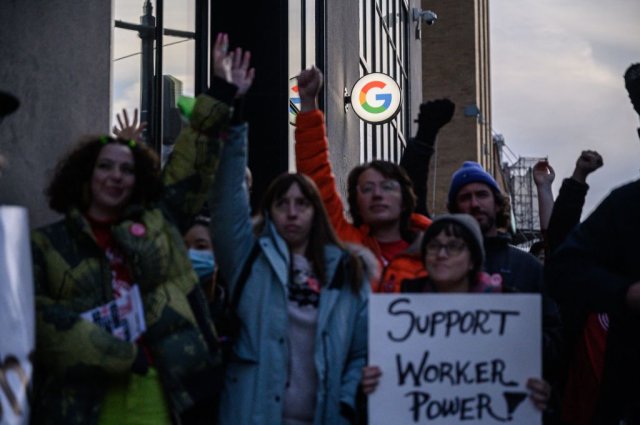Factory Jobs In America: Assessing Trump's Promise And The Challenges Ahead

Table of Contents
Trump's Promises and Policies Related to Factory Jobs
During his campaign, Donald Trump made bold promises to revitalize American manufacturing. He pledged to bring back jobs lost to overseas competition, promising a new era of American industrial dominance. His administration implemented several key policies aimed at achieving this goal:
- Tariffs: The imposition of tariffs on imported goods, particularly steel and aluminum, aimed to protect domestic industries from foreign competition and encourage domestic production. This was intended to boost American factories and the factory jobs they provided.
- Trade Deals: The Trump administration renegotiated existing trade deals like NAFTA (renamed USMCA) and pursued bilateral agreements, seeking to create more favorable terms for American manufacturers. The goal was to level the playing field and make American goods more competitive.
- Tax Cuts: Significant tax cuts were enacted, aiming to stimulate business investment and encourage domestic companies to expand their operations, leading to the creation of more factory jobs. The argument was that lower taxes would encourage businesses to invest and hire.
These actions, while intended to boost American manufacturing, were complex and met with considerable debate.
Analysis of the Impact of These Policies on Factory Job Growth
Analyzing the impact of Trump's policies on factory job growth requires a nuanced approach. While the manufacturing sector did see some job growth during his presidency, attributing this solely to his policies is an oversimplification. The following factors also played significant roles:
- Automation: The ongoing automation of manufacturing processes continues to displace workers, regardless of trade policies. Technological advancements often lead to increased efficiency but fewer jobs.
- Global Economic Conditions: Global economic trends, including fluctuating demand and international trade relations beyond the control of any single nation, significantly influence job growth in the manufacturing sector.
- Changes in Consumer Demand: Shifts in consumer preferences and buying patterns can impact the demand for certain manufactured goods, affecting employment levels.
While some sectors experienced job growth, others faced challenges. A comprehensive analysis requires considering these multifaceted influences. A straightforward correlation between Trump's policies and a significant net increase in factory jobs is difficult to definitively establish.
The Ongoing Challenges Facing American Manufacturing and Factory Jobs
Despite efforts to revive American manufacturing, significant challenges persist:
- Competition from Low-Wage Countries: The cost of labor remains significantly lower in many countries, making it difficult for American manufacturers to compete on price. This presents a persistent hurdle for creating and maintaining factory jobs in the US.
- Automation Replacing Human Labor: Automation continues to accelerate, leading to job displacement in various sectors of manufacturing. This requires a strategic adaptation to the changing landscape.
- The Skills Gap: A substantial skills gap exists, with many available factory jobs requiring specific technical skills that a significant portion of the workforce lacks. This necessitates substantial investment in training and education.
- Reshoring Challenges: Bringing manufacturing jobs back to the US ("reshoring") faces significant obstacles, including higher labor costs and infrastructure needs.
These interconnected challenges highlight the complexity of revitalizing the American manufacturing sector and creating sustainable factory jobs.
The Future of Factory Jobs in America: Looking Ahead
The future of factory jobs in America hinges on several factors:
- Automation and Reshoring: While automation will continue to transform manufacturing, the focus may shift towards reshoring specialized, high-value manufacturing processes. This could potentially create new, higher-skilled jobs.
- Government Investment in Education and Training: Significant investment in education and training programs is vital to bridge the skills gap and equip workers with the skills needed for modern manufacturing roles. This requires proactive government policy and industry collaboration.
- Emerging Technologies: The impact of AI and robotics on the future of factory jobs is complex. While some jobs may be displaced, new opportunities will emerge in areas like AI maintenance, robotics programming, and advanced manufacturing technologies.
Potential future scenarios include:
- Growth in High-Skill Manufacturing Jobs: Demand for skilled technicians, engineers, and specialists in advanced manufacturing processes is likely to increase.
- Increased Automation Leading to Job Displacement: Automation will continue to displace some jobs, necessitating retraining and upskilling initiatives.
- Lifelong Learning and Adaptability: The manufacturing workforce of the future will need to embrace lifelong learning and possess the adaptability to transition between roles and acquire new skills throughout their careers.
Conclusion: The Future of Factory Jobs in America – A Call to Action
The assessment of Trump's impact on factory jobs in America is mixed. While some job growth occurred, it's difficult to directly attribute it solely to his administration's policies. The challenges facing American manufacturing remain substantial, including competition from low-wage countries, automation, and the skills gap. Securing the future of factory jobs in America requires a proactive and comprehensive approach. This includes targeted investment in workforce development, fostering innovation in manufacturing technologies, and promoting policies that support both domestic businesses and workers. We need an informed national conversation about the future of factory jobs in America, engaging with relevant organizations and advocating for policies that strengthen our manufacturing sector and its workforce. Let's work together to build a thriving future for American manufacturing and the skilled workers who power it.

Featured Posts
-
 Darren Ferguson Celebrates Record Breaking Peterborough Efl Trophy Win
May 20, 2025
Darren Ferguson Celebrates Record Breaking Peterborough Efl Trophy Win
May 20, 2025 -
 The Potential Negative Impacts Of The Philippines Typhon Missile System
May 20, 2025
The Potential Negative Impacts Of The Philippines Typhon Missile System
May 20, 2025 -
 Fate Of Abc News Show Uncertain Following Mass Layoffs
May 20, 2025
Fate Of Abc News Show Uncertain Following Mass Layoffs
May 20, 2025 -
 Old North State Report May 9 2025 News And Analysis
May 20, 2025
Old North State Report May 9 2025 News And Analysis
May 20, 2025 -
 Agatha Christies Poirot A Comprehensive Guide
May 20, 2025
Agatha Christies Poirot A Comprehensive Guide
May 20, 2025
